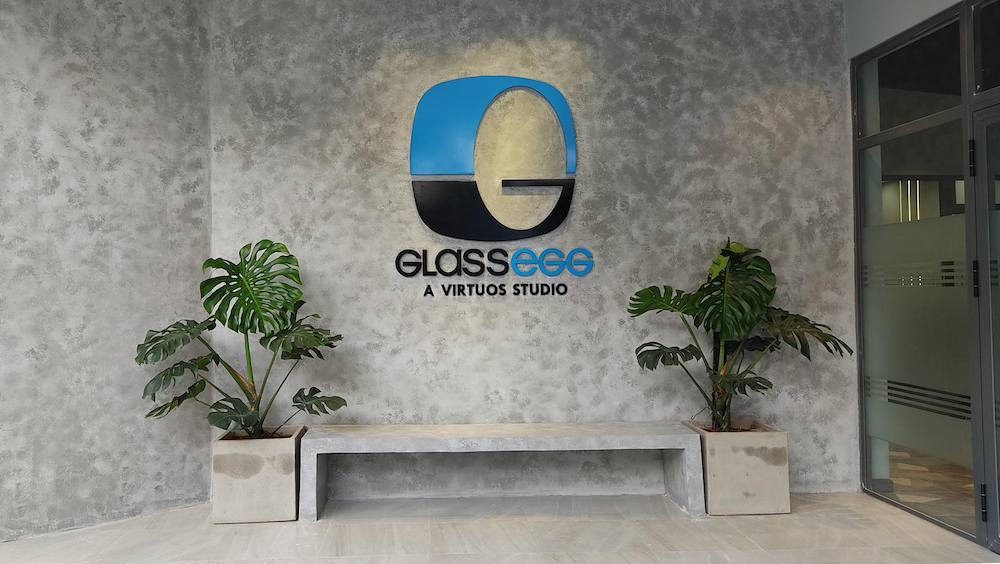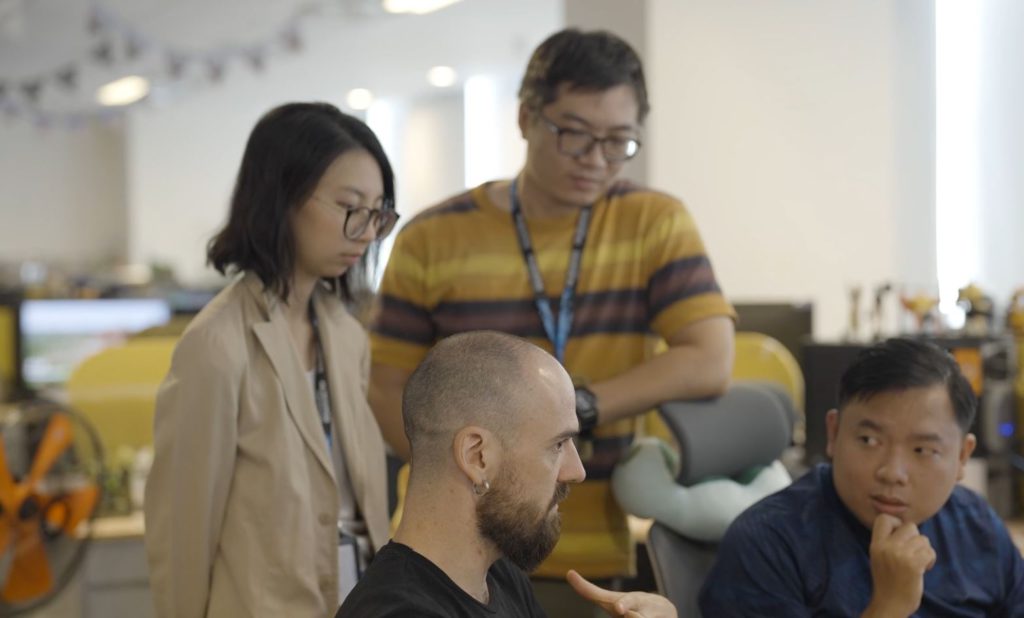Southeast Asia is witnessing rapid growth in the gaming market. With a market size of USD 5 billion and an impressive 270 million gamers, the region has established itself as a prominent player in the industry.
Sparx*, a Vietnamese animation production studio, was acquired by global video game development company Virtuos in 2011 to become the first studio in its portfolio specializing in animation outside of China. Since then, the studio has experienced exponential growth, now boasting a team of 600 professionals.
KrASIA recently spoke with Samuel Stevenin, General Manager at Sparx* – a Virtuos Studio, to learn more about Vietnam’s growing role in the gaming industry and the significant trends to keep an eye on.
The following interview has been edited and consolidated for brevity and clarity.
KrASIA (Kr): How has the acquisition by Virtuos in 2011 impacted the growth and development of Sparx*?
Samuel Stevenin (SS): Our acquisition marked a major change for the studio. Transitioning to a game production pipeline required our team to adapt, acquire new skills, and use real-time technology alongside their expertise in computer-generated animation.
During the 12 years of inter-studio collaborations between Sparx* and Virtuos, we have grown significantly in our capabilities. Currently, we are focusing on projects that require end-to-end solutions ranging from conception to playable stage for character, level, and cinematics. Furthermore, we are looking to expand our end-to-end pipeline by building new game design and development teams in the near future.

Kr: Following the acquisition, Virtuos expanded its portfolio by acquiring another studio in Vietnam, Glass Egg. Could you provide any specific examples of collaborative projects between Virtuos’ Vietnamese studios?
SS: The collaboration between Glass Egg and Sparx* is still in its early stages, with Glass Egg joining Virtuos a little over a year ago. Currently, both studios are focused on aligning communication and project management processes.
As both studios have different specializations — Glass Egg specializes in vehicle art while Sparx* focuses on cinematic and skin development — we see plenty of opportunities for cross-studio training and development for our employees.
For now, we’ve collaborated with concept art veterans from Virtuos Montreal, providing local artists with exceptional training in comprehensive concept art techniques. Additionally, both studios have benefited from a masterclass series in character art, hosted and delivered by the technical art experts in Virtuos China.
Kr: Apart from the two studios in Ho Chi Minh City, Virtuos set up a new studio in Dalat, Vietnam, where you played a role. What were the factors that led to choosing Dalat, compared to other cities in Vietnam?
SS: Dalat is a beautiful city well-loved by many artists for its landscapes, architecture, and evergreen forests, having served as an incubator for many artists and creative legends in Vietnam. Moreover, it boasts good infrastructure and a pace of life that is beloved by the Vietnamese.
We believe Dalat is a hugely inspirational place for artists and creative workers, and are happy to offer it as an internal mobility option to our global talent network. With the launch of the Dalat studio, we look forward to bringing more AAA game art production to the city and contributing to Vietnam’s local game industry.

Kr: How do you envision the role of this new studio within the broader Virtuos ecosystem, especially in Southeast Asia?
SS: Vietnam has emerged as a prominent hub in Southeast Asia, and is home to numerous renowned local and global game studios. Given the vast and enthusiastic local gamer population, many clients recognize the potential for investment and expansion in the region.
Virtuos, being the largest external game developer in Vietnam, has a strong global network and a reputation for training exceptional game artists. Our new studio in Dalat not only demonstrates our deep local knowledge but also showcases our expertise in building teams from the ground up.
With the aim of reaching 1,500 employees in Vietnam by the end of 2024, we’re excited to provide our artists with more opportunities to make their mark on global projects and renowned franchises like Star Wars, Call of Duty, and League of Legends.
Kr: What are some of the unique characteristics that developers from Vietnam have?
SS: Vietnam has a thriving talent pool for game development, benefiting from its strong focus on art and engineering education. The country’s proximity to the culturally diverse Southeast Asian region adds a vibrant touch, immersing Vietnamese game developers in a melting pot of inspiration. This enables them to become exceptional storytellers with unique perspectives.
Coupled with a mobile-first culture, expertise, and a passion for creating world-class content and games, Vietnamese developers have already achieved global success stories with games like Flappy Bird and Axie Infinity.
While Vietnamese talent may have less exposure to the AAA visual quality commonly seen in PC and console games due to the mobile-focused culture, they are highly motivated and passionate to develop their skills further. Many developers in Vietnam are self-taught or receive in-house training from their employers, as professional academic programs for game development have only emerged within the last decade.
Virtuos sees the opportunity to provide them with accelerated career growth by involving them in diverse AAA game projects with our studios and partners worldwide. Developers experienced in mobile games also bring a good understanding of optimization needs, allowing them to collaborate with Virtuos to create more efficient games that cater to a broader audience.

Kr: How has the COVID-19 pandemic affected the gaming development scene, particularly in Southeast Asia?
SS: The games industry has shown resilience during the pandemic compared to other sectors. Game developers, publishers, and operators were able to continue operations with remote work. The demand for games in Southeast Asia increased during the pandemic as people spent more time at home, but larger games benefited more than indie games during this period.
Investments in the games industry in Southeast Asia experienced a notable boost from 2020 to 2022, as investor confidence grew due to the sustained popularity of gaming even after travel restrictions were lifted post-COVID.
However, the cancellation or postponement of major trade events posed challenges for smaller developers and publishers in terms of networking and building relationships. Indie developers, who rely on these events for in-person meetings with potential partners, were particularly affected, resulting in delays or cancellations of many small projects.
As the post-COVID period progresses, the challenges faced by developers in terms of disruptions to in-person collaborations and production pipelines have eased. Southeast Asia continues to be a vibrant game development hub with exponential growth potential. Renowned developers have established their presence in the region, and it is home to the fastest-growing esports market globally.
Kr: What are some key trends or changes you have observed in the Southeast Asian digital entertainment production sector?
SS: ASEAN, the fastest-growing market with a 5.5% growth rate in 2022, is poised to become a global hub for game production due to its increasing appetite for games. Major developers have already established a strong presence in the region, and the influx of investments will further accelerate this growth.
Companies are actively exploring the development of AI-generated tools and content. By leveraging assets and procedural generation, developers can streamline production resources, allowing them to focus on innovation and create a wide range of games. This approach enhances efficiency and fosters a dynamic and diverse gaming landscape.
As digital goods consumption continues to grow, companies are adopting a long-tail process for asset creation. The long tail strategy is about selling unique or niche items to a broad customer base instead of focusing only on popular products. This approach enables the production of a wide variety of assets to cater to diver user preferences, ensuring a comprehensive and engaging digital experience.

